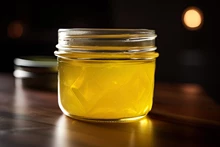
Sugarcane (Saccharum officinarum) family Gramineae (Poaceae) is a widely grown crop in India. As we know that India is in the second position in the world in sugarcane production and the largest sugarcane producing state of India is Uttar Pradesh. It provides employment to over a million people directly or indirectly besides contributing significantly to the national treasury.
The red rot disease, which is also known as the cancer of sugarcane crops, can wipe out entire standing crops. The infection can reduce the sugarcane's weight by 29 per cent and result in poor quality of cane. As much as 25-75% sucrose is reduced in diseased cane as compared to the healthy cane.
Red rot is the most destructive disease of sugarcane. The disease affects every portion of the plant above the ground. The leaves wither gradually downwards with the progress of the disease. The damaged leaf is often the third or fourth leaf from the top, and eventually the entire crown declines and wilts.
In severe cases, the cane shrinks and loses weight as the pith eventually dries out. The fungus begins to grow on the rind at this stage, often slightly below or above the nodes. When the infected canes are split open, they produce an alcoholic or acidic starchy odour due to fermentation and show reddish areas. The red rot attack starts from September to October.
The fungus that causes the disease is spread by wind, rain, and insects. The disease might persist from one year to the next in the soil, decomposing leaves, or crop stubble that is left over after ratooning. When a farmer plants canes that are already infected, the disease will also spread to the field.
Symptoms:
-
The affected canes leaf changes its color, from green to orange and then to yellow in the third or fourth leaf and after that, the leaves start drying from bottom to top.
-
If the fungal microorganisms enter the leaf sheath through the leaf midrib, then reddish spots can be seen on the back side of the leaf midrib.
-
The external symptoms appear only after16 - 21 days after infection and drying of the entire cane take another 10 days.
-
When the affected cane is split open, the inner region is reddish in colour with intermittent white traces across the cane length.
-
Sometimes, the pith inside the cane is filled with blackish brown liquid and exhibited alcohol odour.
Economic Impact
A red rot disease was witnessed in the subtropical area of Uttar Pradesh (UP) and Bihar, the main sugarcane region in India, during the 1938–1939 growing season. This destruction led to the collapse of the important commercial variety Co 213, which destroyed thousands of hectares. The sugar mills in the eastern UP only crushed one-third of their typical canes during 1938–1939 and a half during 1939–1940 due to a lack of cane supply.
Pathogen:
-
Red rot disease is caused by the fungus Glomerella tucumanensis. An older name, Colletotrichum falcatum, is still preferred by some pathologists.
Management
Cultural method:
-
The best way to control red rot is to select setts for planting from healthy plants in a disease-free area.
-
The red rot affected field must be crop rotation with rice for one season and other crops for two seasons.
-
Growing of recommended resistant and moderately resistant varieties viz., Co 86032, Co 86249, CoSi 95071, CoG 93076, CoC 22, CoSi 6, and CoG 5.
Physical method:
-
Removal of the affected bunches at an early stage and soil drenching with Carbendazim 50 WP (1 gm in 1 litre of water)
-
The cut ends and entire setts should be dipped in a fungicide solution, such as 1 % Bordeaux mixture.
-
If the disease is noticed in the field, the leaves and canes should be collected and destroyed by burning.
Chemical method:
-
Adopt sett treatment with Carbendazim before planting (Carbendazim 50 WP (0.5 gm in 1 litre of water) or Carbendazim 25 DS (1gm in 1 litre of water) along with 2.5 kg of Urea in 250 litres of water
-
Use fungi toxic chemicals like Bavistan, Benomyl, Topsin, and Aretan at 0.1 per cent for 18 min. at 52ºC for dipping setts which gave almost complete elimination of rot infection.











